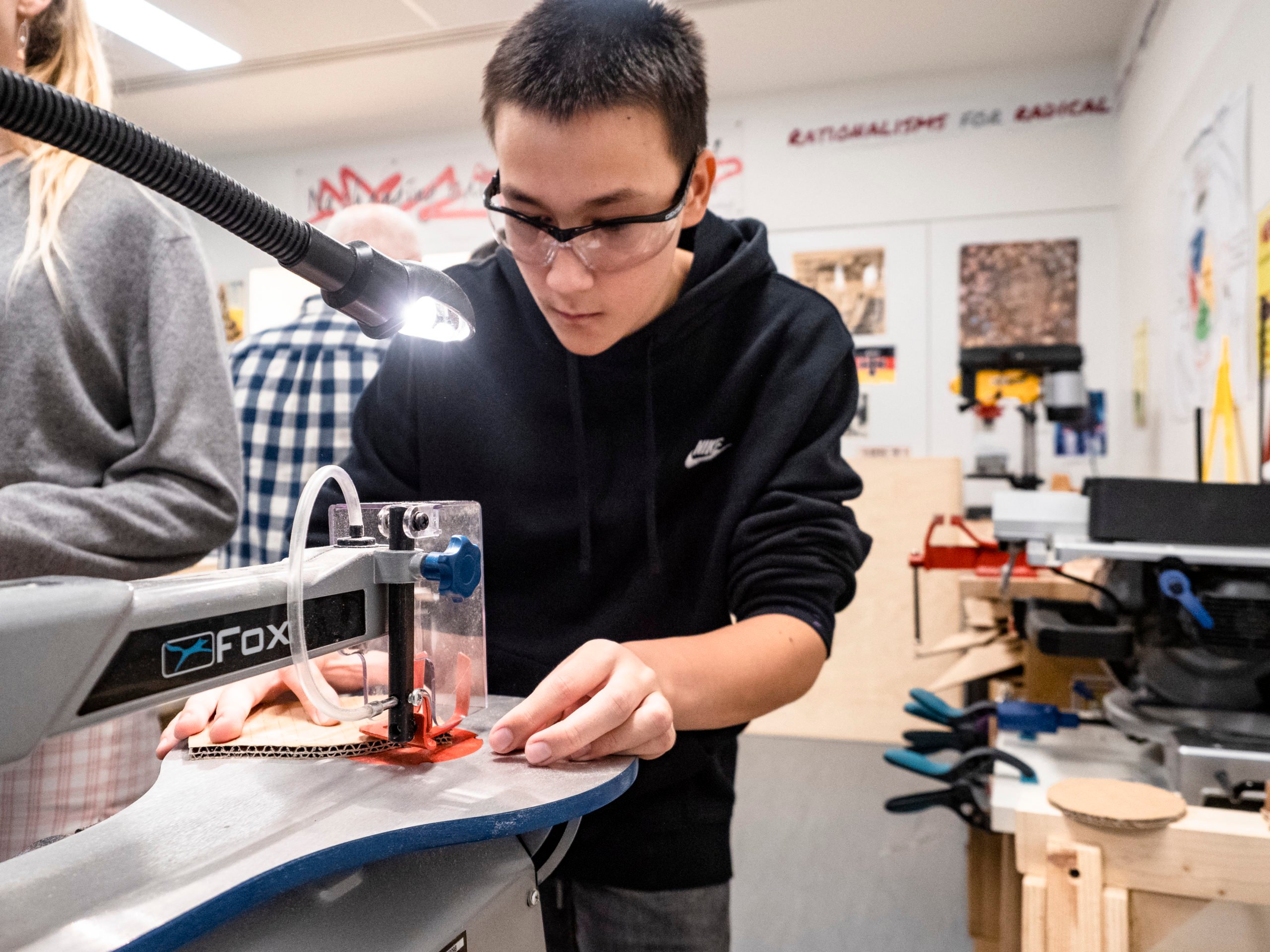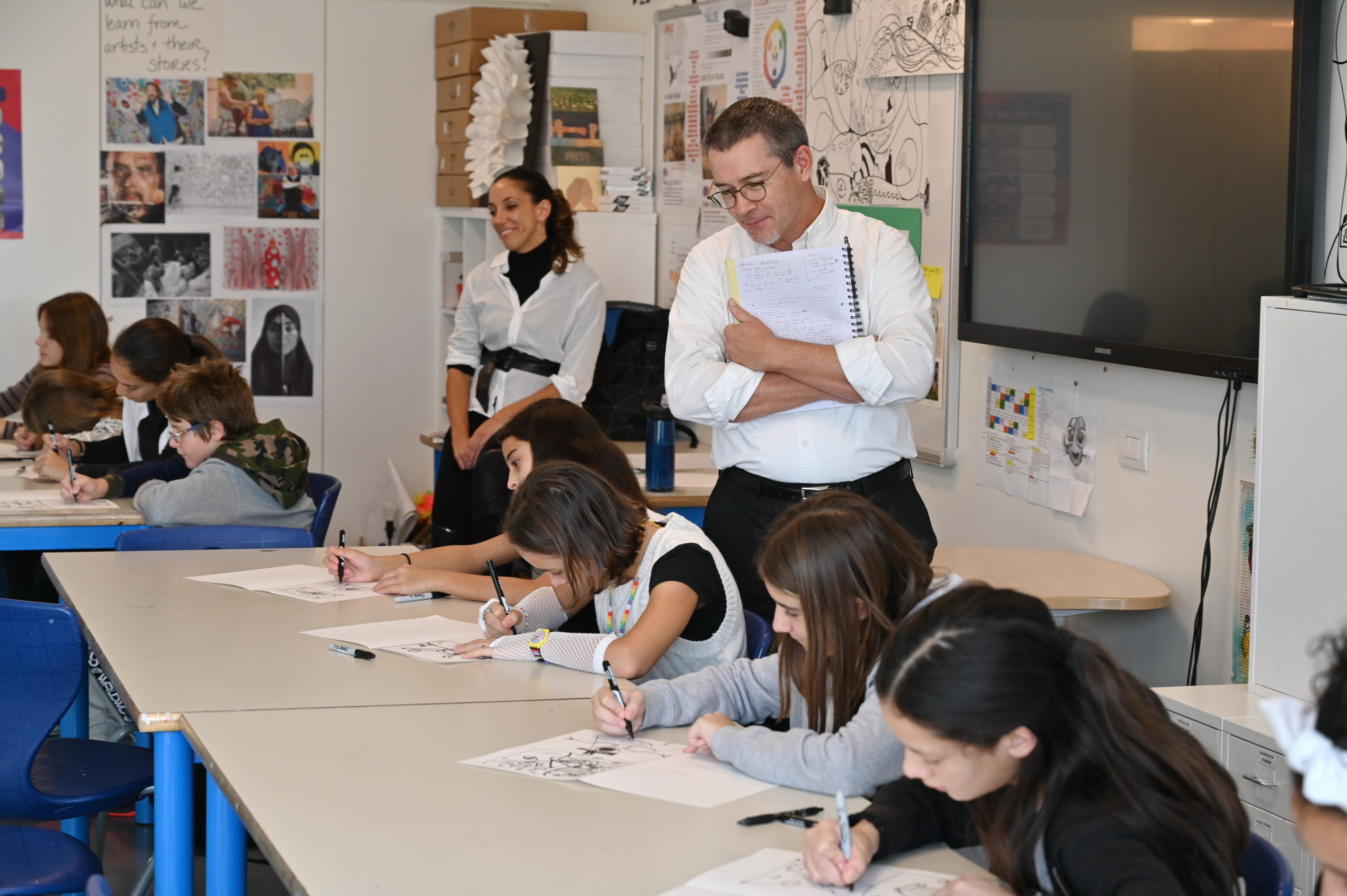How this Milan school has made a 60-year tradition of innovation
Milan has been a centre for innovation ever since Leonardo da Vinci called the city home in the fifteenth century. So, it’s only fitting that the city’s premier international school has been a trailblazer for almost 60 years.

Together with the American School of Milan (ASM), we examine some of the major firsts in the history of the school, to understand how it continues to lead the way for international education in the region.
First steps
With a need for a school to serve the growing number of English-speaking families in the region, the American Community School of Milan was founded in 1962. The school moved to its current location in 1976, by which time it had also adopted its current name The American School of Milan.
Since the move to Noverasco di Opera, just south of Milan, the campus has expanded to incorporate a 500-seat auditorium, 7 labs, 2 gymnasiums, robotics and Maker Space classrooms, with the capacity for 1000 students.
In the early ‘80s, ASM became the first school in the city to adopt the International Baccalaureate (IB), the ‘gold standard’ for international curricula. Since then, nearly all of 11th and 12th graders follow the Diploma Programme in the last two years of high school.
ASM allows every high schooler to follow the DP and challenge themselves with its rigorous curriculum. All graduates from ASM obtain an American high school diploma and those that pass the IB, then receive both diplomas.
Early adopters
The effective use of technology has always been a priority at ASM. That is why, in 2000, it became one of the first schools in Europe to adopt a laptop program. Over the last two decades, the use of IT has flourished at the school – in elementary school, each student has access to an iPad.
In the upper school, all students bring their own laptop or rent them through the helpdesk at school. Technology is an integral part of the curriculum and students entering 6th grade take a full year course of Digital Citizenship.
Not only do students work with laptops, but the ASM campus is now equipped with touch-screen smartboards, digital cameras and digital diagnostic tools, as well as a ‘MakerSpace’ in which teachers challenge students to solve problems using a range of equipment, tools and materials.
The school also has air quality monitors for Science classes, drone building classes, Design and Technology courses, Computer Science IB course, CNC printer and laser cutter.
Technology is so integrated into the classrooms, that it was the first school in Europe to go completely online in the early days of the coronavirus pandemic, and in less than 24 hours! Many other international schools in Europe, and around the world looked to ASM for guidance as the pandemic swept across the continent.
ASM’s strategic plan continues to pave the way for the expansion of effective and responsible technology use in the classroom, making sure it will remain the best equipped K-12 campus in Milan.
The power of Art
As much as the Italian Renaissance saw an explosion of artistic achievement reflecting the growth of knowledge, ASM understands that education of the whole student includes significant and meaningful exposure to all forms of Art.
Reflecting the wealth and popularity of Italian cinema, ASM was the first school in Italy to offer the Film Arts program at the IB diploma level, and budding filmmakers create a range of short films each year for their peers and teachers to enjoy. Several of these shorts have gone on to win awards at film festivals.
From the Early Childhood program to the 12th grade, ASM students are involved in visual and performing arts. Music classes are offered in orchestra, Band, Rock Band, and Choir. ASM students use a range of materials, as well as high-tech tools to express themselves visually, and their artwork can be found throughout the campus.
There is also an extensive music and drama curriculum that incorporates musicals and concert performances for elementary, middle and high schoolers.
Stronger, higher, faster
Physical education and a robust sports program form a central pillar of student development at ASM. Across each of the school’s divisions, physical education introduces students to a wide range of team sports and activities that address motor skill development. Students can also choose to engage and participate in athletics as part of the After School program, from elementary school onwards.
From high school, ASM students can also participate in varsity and junior varsity sports as part of the NISSA and ECS competitions of international schools. ASM has enjoyed a great deal of success in this program, with the boys’ and girls’ varsity teams winning several NISSA and ECS competitions.
The road ahead
Planning for the challenges ahead, ASM spent the 2020–21 school year engaging staff, students, parents and other relevant stakeholders in developing a new Strategic Plan.
This plan prioritises both financial resilience and continued development of advanced infrastructure, to make sure the school continues to offer the best international education in Milan.
In December, Director Wayne Rutherford will lead the school in celebrating the school’s 60th anniversary, and the entire community will remember the many firsts that ASM has achieved since its birth.
With this same kind of foresight, dedication and attention to detail in the years ahead, the school will undoubtedly innovate and thrive for another 60 years to come.
This content was paid for by an advertiser and produced by The Local's Creative Studio.




Join the conversation in our comments section below. Share your own views and experience and if you have a question or suggestion for our journalists then email us at [email protected].
Please keep comments civil, constructive and on topic – and make sure to read our terms of use before getting involved.
Please log in here to leave a comment.